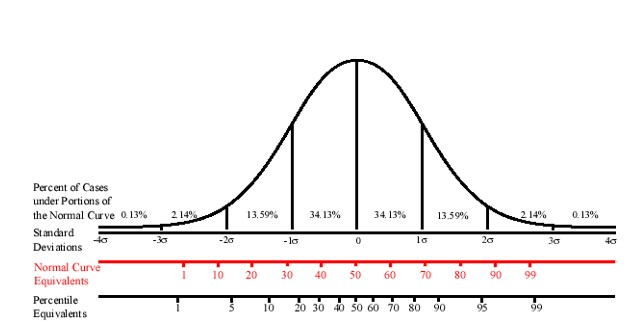Types of large-scale assessments
For schools and school districts to adequately assess students’ achievement and growth toward important achievement targets, multiple sources of data are often utilized. These data sources often include the use of assessments that typically fall into two categories:
Criterion-referenced assessments
Simply put, a Criterion-Referenced assessment is typically an assessment that was developed to assess a student’s mastery of a relatively limited number of achievement targets.
The resulting scores typically include a raw score, or a score indicating the percent of items (skills) the individual got correct in comparison to the total number of items on the assessment.
When interpreting the scores, one is only able to make judgments in relation to a functional performance level (cut score) and not in relation to how others performed on this assessment.
Norm-referenced assessments
In contrast to a Criterion-Referenced Assessment, a Norm-Referenced Assessment is typically an assessment that was developed to assess a student’s performance on a wider sample of content within a specified achievement target.
The results scores typically include a raw score as well as derived scores such as a standard score, percentile rank, Normal Curve Equivalent (NCE), as well as both age and grade equivalents.
When interpreting scores, one is able to make comparisons between the student’s performance with that of other students in a specified reference population of the same age and grade (norm group).

Both types of assessments might be considered to be “Standardized Assessments,” meaning they are administered and scored under standard conditions that do not vary between student or time of administration. The structure of these assessments, the resulting scores and the generalizations that can be made upon the interpretation of the results vary greatly.
Large-scale assessments include:
- ISASP – Iowa Statewide Assessment of Student Progress
- ELPA21 – English Language Proficiency Assessment for the 21st Century
- DLM – Dynamic Learning Maps
- NAEP – National Assessment of Educational Progress
- Teaching Strategies GOLD
- MAP – Measures of Academic Progress
- FAST – Formative Assessment System for Teachers
- IGDI – Individual Growth and Development Indicators
Definitions
Measures of academic progress (MAP)
Measures of Academic Progress (MAP) are state/district-aligned computerized adaptive tests that accurately reflect the instructional level of each student and measure growth over time. Assessments are available for students in grades 3rd through 12th in the academic areas of:
- Reading
- Language Usage
- Math
- Science
New to the MAP assessment is a Kindergarten through 2nd-grade assessment that measures skills in the areas of early literacy and numeracy.
Website Resources:
